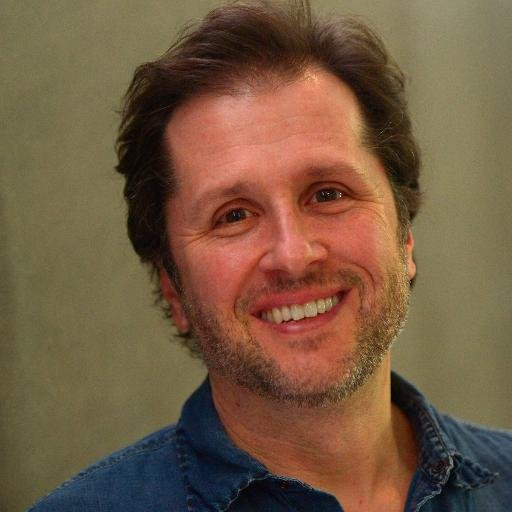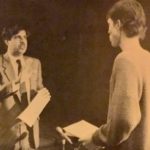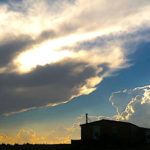Tom Haines is the staff travel writer at The Boston Globe. During more than a decade as a journalist, Tom has reported on economics, politics and culture in dozens of countries and on five continents. As the Globe‘s travel writer, Tom has covered guns and cricket in Guyana, trumpets and nationalism in Serbia, and Gandhi’s legacy in rural India. In 2005 and 2003, he was named Travel Journalist of the Year by the Society of American Travel Writers Foundation. His story about an Ethiopian village facing famine appeared in the 2004 edition of Best American Travel Writing. A native of Pittsburgh, Tom now lives north of Boston with his wife and two children.
How did you get started traveling?
My parents have a picture of me sitting on a raft on the beach at Cape May, New Jersey when I was three years old. I’m looking out to sea, the water is about 40 feet ahead of me, and I’m just sitting on the raft high and dry in the sand. So traveling, I suppose, but not getting very far.
At age 5, I almost made it up Mt. Moosilauke in New Hampshire. At age 12, I got across the snow-covered willow fields before bailing out at the base of Mt. Bierstadt, in Colorado.
All of that, and many other trips between, served well when, sitting in an office building in Columbus, Ohio at age 23, I told a bunch of British colleagues I wanted to quit my consulting job. Well then, they said, you have to travel to Indonesia. And Thailand. And New Zealand. And Australia…
How did you get started writing?
My dad is a man of words and can recite poetry off the top of his head to fit a given mood or situation. I can’t, but the point is that from the beginning writing and literature had a big role in our house. Hemingway, Fitzgerald. I didn’t dig into it much growing up, but it lingered. More practically, my brother had been editor of our high school newspaper and I followed him in that.
It wasn’t until the aforementioned consulting job — programming Cobol with a college degree in history — that I realized I may want to tap into that earlier journalism as a career. So I went to grad school, wrote about 4th of July parades and small-town murder for the Idaho Falls Post-Register, fatal fires, pumpkin patches, child-sex-rings and satellite schemes for the Seattle Times, and more.
Particularly at the beginning, I considered myself a reporter more than a writer. I was drawn to the stories and the writing of them more from the front end, out in the streets covering the news, trying to sort out how things were working and communicating that to people.
I still believe that the best travel writing, regardless of genre or style, is that which begins with careful, thorough reporting. Seems obvious, perhaps, but I’m often surprised how much travel writing fails to get very far out into the world.
What do you consider your first “break” as a writer?
Early on, I wrote a free-lance piece for the New York Times national section about a California school teacher busted for smoking toad venom. An editor, whom I’ve never met, moved the names of the four toads involved — “Hanz, Franz, Peter and Brian” — from deep in the story to the lead sentence.
It didn’t hasten my career along, but it made the story better. It was through learning that and other small lessons about use of detail and emotion and senses to capture and convey scenes and situations that I began, slowly, to think as much in terms of writing as reporting.
I made a broader shift from more traditional news writing to so-called narrative writing while doing free-lance reporting in Europe for three years in the late 1990s. In between writing foreign news for The Boston Globe and others, I wrote first-person narrative pieces about going down a coal mine in Ukraine and wandering Serbia & Montenegro in the days after Milosevic was kicked out of power for The Atlantic Monthly online. The rules for those pieces were wide open, and doing them pushed me in a direction of writing more strongly and creatively about the experience of place.
As a traveler and fact/story gatherer, what is your biggest challenge on the road?
The following applies to a more open-ended cultural piece, such as those in the Crossing Divides series.
I believe good travel writing, as opposed to foreign reporting, or essay writing, or memoir, or whatever, comes with recreating the experience of place. That is, try to present a complete picture: factual, imagistic, emotional. Try to capture, in other words, the multiple layers of reality of a place. Economics and politics, religion and history are all critical. But so is the way people walk, or talk, or act in a group, for example. So is how the light changes by late afternoon, or the feel of a hot wind from the west.
How can one be alert and look for these and other things and not try to force them? How can one basically exist in a place in a way that things unfold naturally, while still reporting a story?
The basketball coach Bobby Knight once said, “I think we’re in position to be in position.” It’s a good place to be, and when out somewhere for a story, it’s what I try to do. Before going, learn a lot, but not too much. Have ideas, but not a plan. Essentially, aim for an informed ignorance, so that you can know the contexts beforehand, then let the place define itself.
That said, on the practical side, before going, I try to read history and literature. I talk to people who know a place, from academics to immigrants. I watch movies from that place, or listen to music, or eat the cuisine. When there, I take notes all day and try — usually unsuccessfully — to jot ideas and thoughts at night.
I interview people. Farmers and monks. School kids and government ministers. Rich and poor. I shift gears, too, to wandering and wondering with my hands in my pockets.
The challenge, of course, is to keep such things open ended while also focusing on elements that are relevant so that what you are exploring and experiencing is, in the end, a story about a place and the people who live there.
What is your biggest challenge in the research and writing process?
What to throw out, what to keep. What to focus on, when. Basic stuff, of course, but I think in drafting a story — and here I mean a narrative that tries to follow a true arc from beginning to middle to end — the challenge is to find the heat, and how to keep it burning. I’m not saying I can always do all this, but that is the goal.
Travel writing, unlike so much in newspapers, at least, is really almost completely defined by the writer. There is seldom a hard news hook, or even a thematic element that demands a certain structure or content. So it is up to the writer to choose what voice, what structure, what content will drive the story. Of course this is easier if the story recounts a specific journey — following the Tour de France, for example, or driving south to Patagonia. But even then, what is the story?
I think what carries the most weight on the page are intimate scenes and characters. The trick is finding those that drive the narrative and how best to frame them in context, while letting them be absolutely authentic.
When I look back at early notes of a story, or early drafts, it’s amazing what never makes it to print. Whole episodes or encounters or scenes. The good news is there comes a point in the writing when the big block of formless granite that is a journey or experience somewhere takes shape and pieces chip off easily and you can try to polish those that are left.
What is your biggest challenge from a business standpoint? Editors? Finances? Promotion?
As a staff writer at a newspaper, I am fortunate not to have to worry about finances, promotion, or pitching stories. To the contrary, I am lucky to have incredible support, financially but also in terms of freedom and feedback to propose stories and pursue those that have potential, and to write in a variety of forms and ranges. Seeing the freelance market from afar, it looks to be daunting and demanding.
Have you ever done other work to make ends meet?
No. For most of my adult life — I’m 37 now — I’ve worked as a staff reporter at a daily newspaper.
What travel authors or books might you recommend and/or have influenced you?
I tend to read writers who are not considered travel writers. Eduardo Galeano. Ryszard Kapuscinski. Alma Guillermoprieto. John Steinbeck. I just started reading Denison, Iowa, by Dale Maharidge and it is, like all of his work, outstanding. Well-written, or course, but built upon careful, intelligent reporting.
What advice and/or warnings would you give to someone who is considering going into travel writing?
Do it because you want to engage with the world, not because it seems an exotic pursuit. It is a way to see the world, or a nation, or a state, true. But it is also an incredible responsibility, I think, to document the way people live and, at times, why, and show that to readers near and far.
What is the biggest reward of life as a travel writer?
Sipping tea with farmers on the banks of the Nile? Chatting with an elderly reindeer herder on the frozen Russian tundra? Watching U2 play “New Year’s Day” before a frenzied stadium crowd in southern Poland? Firing a .22-calibre semiautomatic pistol with C.W. Quier in Enid, Oklahoma?
No … coming home and giving puppets from Mexico to my three-year-old son and one-year-old daughter, then slipping on a CD by Los Dandy’s as my wife walks into the room, and all of us, for a few moments, go out on the road together, dancing and laughing in the early morning hours.





